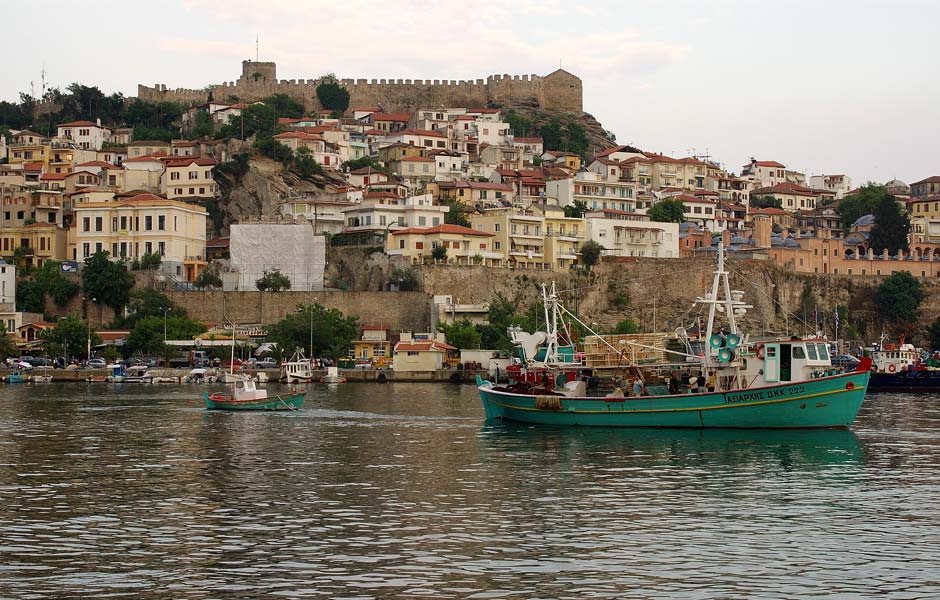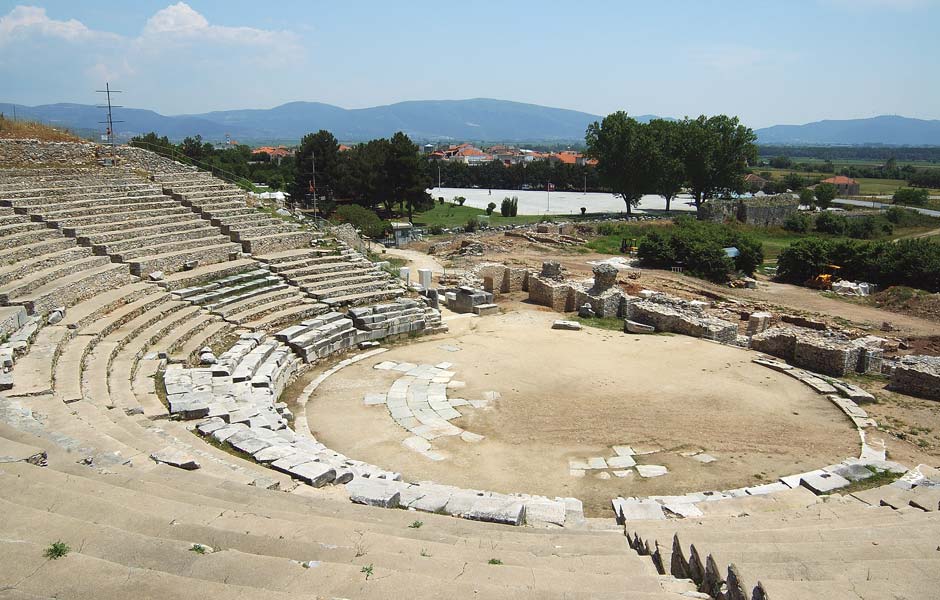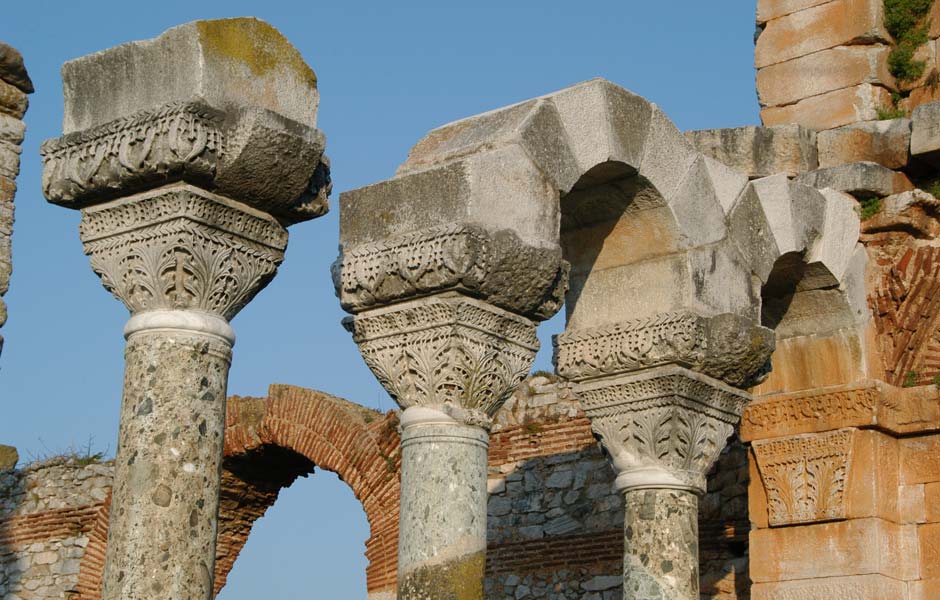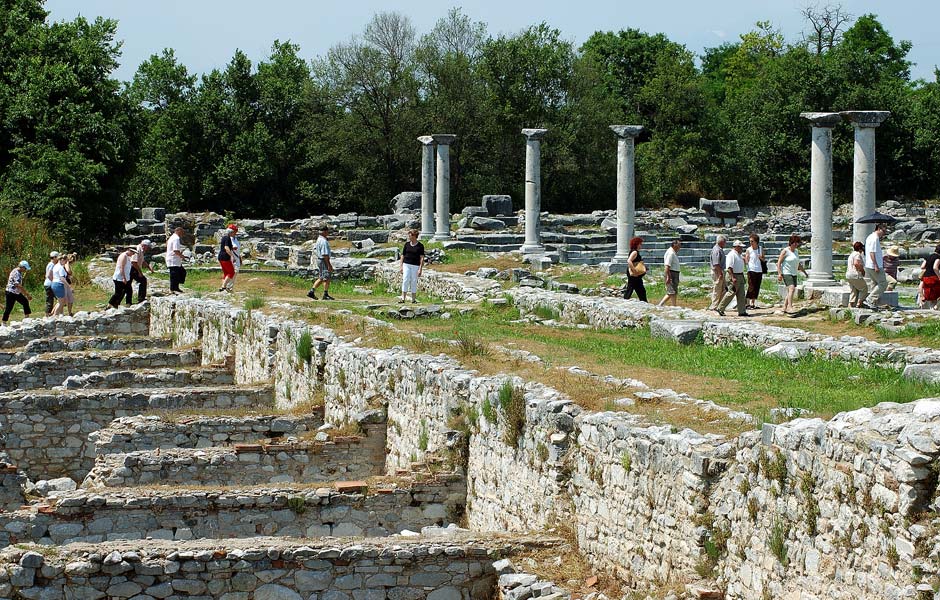Kavala is a very beautiful city, built amphitheatrically over the homonym graphic gulf. It is a big harbour, commercial and industrial centre with tradition in the processing of tobacco. Over the city dominates the castle with the fantastic view and below unfolds the old city. In the old city the traditional settlement of Panagia is a genuine sample of traditional Macedonian architecture, with the alleys and neoclassic mansions.
The modern city of Kavala, maintains inalterable a lot of elements from its old physiognomy and creates a combination of the old and the modern.
The city was inhabited from the Neolithic era. It is first mentioned in the 7th century BC with the name Neapolis as colony of Thasos. Later the Romans strengthen its position as commercial harbor and make it a junction point of Egnatia Road. Apostle Paul passed from Kavala in 50 AD in order to teach Christianity. At the Byzantine years it was renamed Christoupolis and during the Ottoman domination Kavala.
The beaches of the prefecture are beautiful with clean waters and tourist infrastructure.
Sights
- The archaeological site of Philippi.
- the big forest in the narrowest point of river Nestos, a paradise with rich flora and fauna and the protected water biotope of Nestos with rare plants and wild birds and animals.
- the Citadel of Kavala dated at the beginning of the 15th century.
- the Coastal Walls a part of the medieval fortification that encompasses the rocky peninsula of the traditional settlement of Panagia.
Archaeological site of Philippi
First residents were colonists from Thassos in 360 B.C. who founded the city Krinides. When the city was endangered from the Thracians they turned to the Macedonian king Philippos II for help, who forseeing its strategic position, conquered, and fortified and renamed it Philippi. After the battle of Philippi, where Oktavianos and Antonios won Vroutos and Kasios, the city became a Roman colony and prospered because of its position on Egnatia Road.
Later in 50 Apostle Paul founded here the first christian church in Europe and baptized the first European Christian. This made Philippi a metropolis of Christianity. During the Byzantine period (963- 969 AD.) the city walls were reconstructed and the towers and the wall of the acropolis were built.
Today in the area are saved characteristic monuments from the Hellenistic, Roman and Early Christian periods.
Most important of them are:
- The theatre built from king Philippos II in the 4th century B.C.
- The walls and the acropolis,
- The Agora (market) that is a group of buildings around a central square.
- The Palaestra.
- The prison of Apostole Paul.
- Basilica A, a large, three-aisled basilica 130×50 metres of the 5th century.
- Basilica B, a three-aisled basilica dated in 550.
- Basilica C, an impressive three-aisled basilica with narthex and transept dated to the 6th century.
Information
Access – Transport
By Bus
Kavala KTEL (Public Bus Service)
www.ktelkavalas.gr
0030 2510 222294
Thessaloniki KTEL (Public Bus Service)
Macedonia Public Bus Service
0030 2310 595422
Athens KTEL (Public Bus Service) – Kifisos station
0030 210 5129407
By Plane
Kavala airport “Megas Alexandros” 0030 25910 53400
Position: 31 km from the city of Kavala.
By ship
Kavala Port authority 0030 2513 505400
Keramoti Port authority 0030 25910 51204



